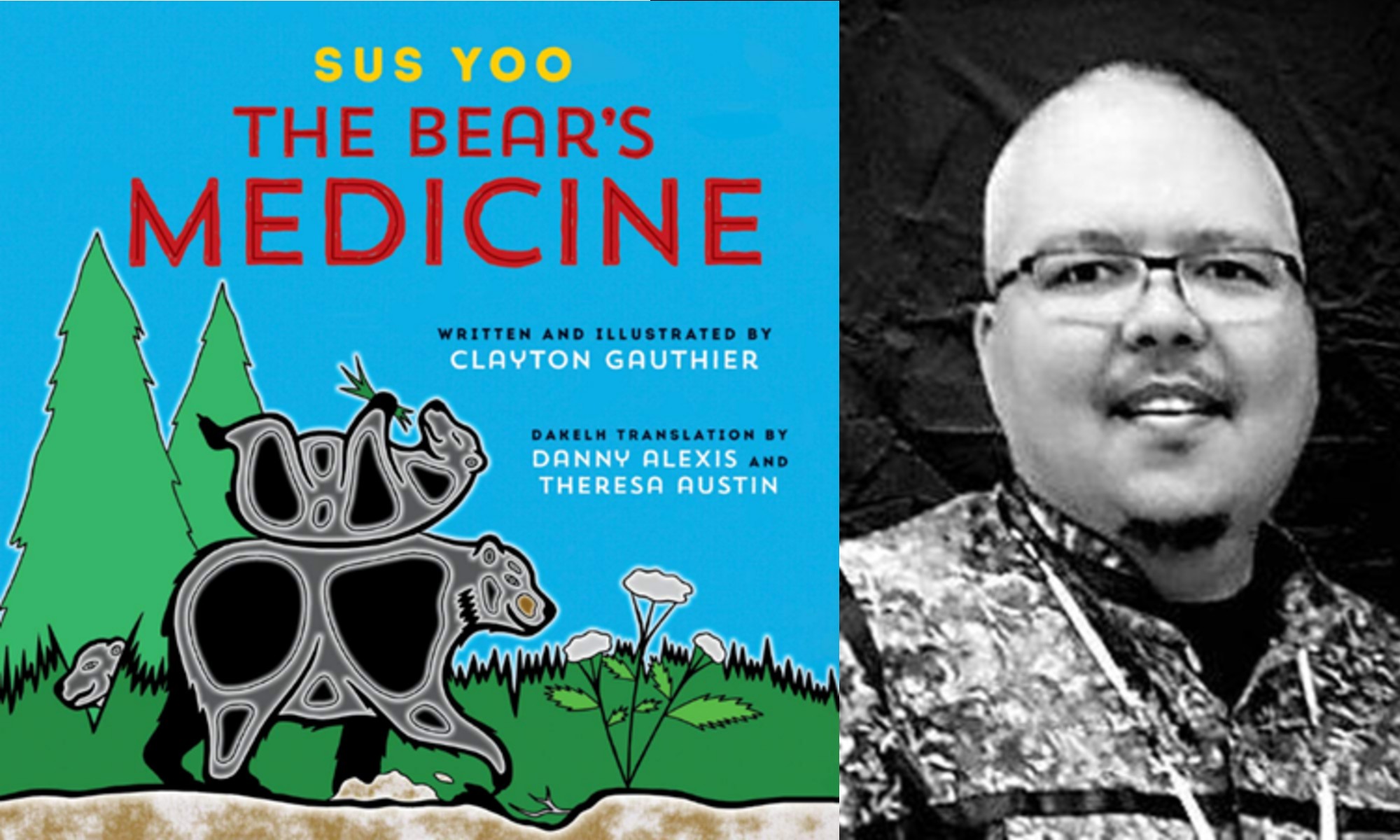 For multi-media artist Clayton Gauthier, kids have the easiest time understanding the lessons found in his picture books, 2016’s The Salmon Run and 2019’s The Bear’s Medicine (both Theytus Books). It’s adults, he’s found, who have the most barriers to learning from his animal protagonists’ example.
For multi-media artist Clayton Gauthier, kids have the easiest time understanding the lessons found in his picture books, 2016’s The Salmon Run and 2019’s The Bear’s Medicine (both Theytus Books). It’s adults, he’s found, who have the most barriers to learning from his animal protagonists’ example.
“When we are born, we are born with unconditional love,” he says. “That baby looks at you with love and looks at your spirit. Doesn’t look at colour, doesn’t look at race, doesn’t have a mindset of money. These things are taught. So how do we get back to that?”
In late September, the Cree-Dakelh author’s second picture book, The Bear’s Medicine, was chosen for this year’s First Nation Communities READ program, an initiative by the Ontario First Nation Public Library Community to encourage literacy, intergenerational storytelling, and Indigenous voices in publishing.
A jury of Indigenous librarians from across Ontario chose The Bear’s Medicine along with Drew Hayden Taylor’s Chasing Painted Horses (Cormorant Books) for this year’s program. Each author receives $3,000.
The picture book, written in English and translated into Dakelh, is about a mother bear and her cubs and their lives on the land. Gauthier says the images came to him first and were influenced by his father.
“He taught me a lot about the bear and how the bear teaches us many things on the land: where to get the salmon, where to get the berries, what roots to dig that we still dig today,” he says. “I wanted to open that door not only for our kids, but our adults too. To look at these animals and be grateful for what they teach us.”
He then wrote gentle rhymes that course with powerful lessons to accompany the images. For example, an illustration of the cubs lapping up water from a stream underlines the importance of gratitude: “we love each drink we take/giving thanks as the season awakes.”
Born in Prince George, B.C., he spent summers on the Nak’azdli First Nation in northern British Columbia, where he witnessed the way in which animals operate in nature. He now uses those observations as a guiding philosophy. “They know to get prepared for winter or start gathering for spring,” he says. “Do we as human beings know our job?”
He hopes the new audiences who come across his work through the Communities READ program will do like the animals do and learn to trust their instincts. “It all starts with your heart,” he says. “What makes your heart sing, what are the things that you love to do, and how can you share that with others in a good way. We have a responsibility to make ourselves feel good and do what’s best for us.”
 Contact us via email
Contact us via email
